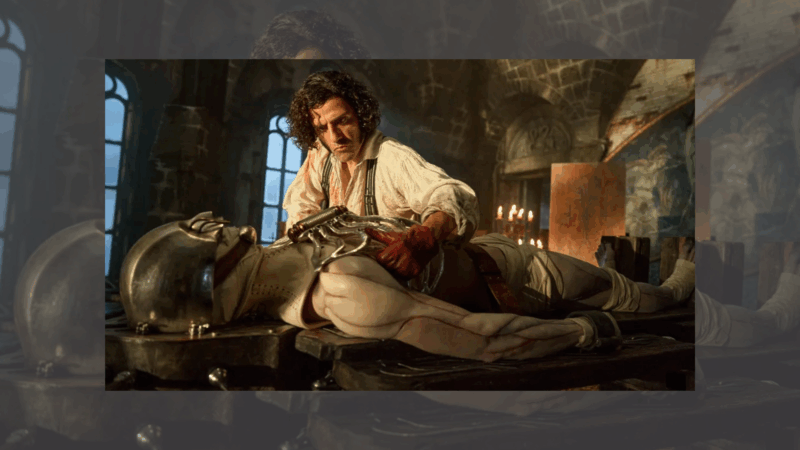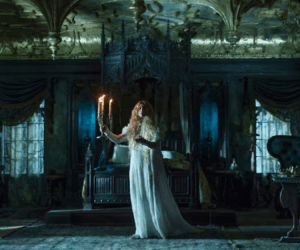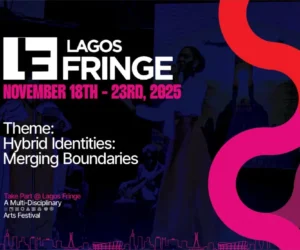As I anticipated the release of Frankenstein, I went down a rabbit hole of monster madness and discovered that Frankenstein might just be the most remade character in film history. There are over 423 feature films and 204 short films that feature some version of Frankenstein’s monster.
From silent black-and-white classics to modern sci-fi horrors, it feels like every generation has had its own obsession with this tragic creature.
And now, Guillermo Del Toro has finally joined the club; only this time, he’s turned Mary Shelley’s 200-year-old story into something intriguing, heartbreaking, and visually stunning. His Frankenstein, starring Oscar Isaac, Jacob Elordi, and Mia Goth, feels like watching a gothic painting come to life.
&format=jpeg)
The Icy Beginning
From Afrobeat pioneers to today’s Afropop icons, these nine Nigerian artists have cemented the country’s influence on the global music stage through record-breaking Grammy nominations.
By choosing Asake, Red Bull Symphonic showed that Afrobeats hold its own with any genre, and still make the crowd move.
Tife Balogun has certainly inherited more than just his father’s name. He has the rhythm, the confidence, and the unmistakable spark of a star in the making.
We start aboard a royal Danish ship trapped in ice as its crew struggles to reach the North Pole. They spot a smaller, burning boat surrounded by blood, and rescue an injured man with a broken leg. Soon, the men hear terrifying growls echoing across the ice, the unmistakable sound of a monster drawing near.
In a tense confrontation, the creature slaughters several of the crew before pointing to the rescued man and demanding, “Bring him to me.” The monster calls the man Victor, and we learn that this is Victor Frankenstein himself.
As the ship tips precariously under the monster’s strength, the crew fires a final bullet that cracks the ice beneath the creature, sending him plunging into the freezing water below.
Part 1: Victor’s Tale
The film is split into two parts, and as Victor is brought aboard the ship, he tells the ship’s captain that the monster is hunting him and begins his story.
We flash back to France, where a young Victor lives in a castle under the cruel hand of his father, a baron and surgeon who despises both Victor and his mother, Claire. There’s a scene where his father beats him with a cane after a failed lesson.
Victor develops trauma after his mother’s death during childbirth, and he vows to conquer death itself.
Now an adult, Victor becomes a brilliant but unhinged surgeon determined to succeed where his father failed. He’s not just consumed with his scientific quest but obsessed with selling his peers and his family on the rightness of it. Ordinary ethics need not apply when you’re talking about eternal life.
Victor demonstrates his scientific experiments to a horrified audience, saying; “Show them that man may pursue nature to her hiding place and stop death,” he declares defiantly, presenting a specimen made from the brain of a shopkeeper and the arm of a carpenter, powered by electricity.” But the public labels his work “unholy, an abomination, an obscenity.”
Supported by an arms dealer, Henrich Harlander, he begins his morbid experiments and falls for Harlander’s niece, Elizabeth (Mia Goth), who also happens to be engaged to Victor’s brother, William.
Eventually, he succeeds in giving life to a nameless Creature (Jacob Elordi), but his triumph turns to torment when the Creature develops self-awareness, literacy, and a yearning to understand his place in the world.
READ ALSO: Mark Your Calendars For The 9 Most Anticipated Anime Releases of 2026
Part 2: The Creature’s Tale
After Victor’s failed attempt to kill his creation by burning down his home, the Creature survives, hiding in a family’s house where he secretly learns to speak.
The Creature eventually tells his side of the story to the ship’s captain, describing how he is hunted by men, befriends animals, and hides in an old mill.
He even helps a family that believes a “spirit of the forest” watches over them. A blind old man, played by David Bradley, teaches him language and compassion. Slowly, the Creature grows the soul of a poet.
Unlike many Frankenstein adaptations that depict the Creature as a creature that can’t speak, Del Toro restores his eloquence, as written in Shelley’s original novel.
The Women of Frankenstein
Mia Goth shines as both Victor’s mother and Elizabeth, making the two roles feel symbolically connected. Elizabeth, fascinated by insects and nature, mirrors the Creature’s own search for belonging. As Del Toro explains, “Elizabeth’s wardrobe represents nature. That’s why she connects with the Creature. She represents the holy and the natural world. So she’s dressed in white, which is purity. It’s also the Creature.”
&format=jpeg)
Her white gown is inspired by The Bride of Frankenstein and even uses bandage-like textures, visually linking her to the monster himself.
What I Loved
Every actor’s performance in Frankenstein is pitch-perfect. Oscar Isaac’s Victor Frankenstein is brilliant and terrifying, and his obsession with overcoming death blinds him to morality and love.
Victor believes he’s bringing ultimate good to mankind, but his ambition consumes him. Even when he teeters on the edge of mad scientist theatrics, he never loses emotional depth. You understand his motivations, even if you can’t condone them.
Del Toro’s Vision
Years ago, Guillermo Del Toro once confessed, “I dream I can make the greatest Frankenstein ever, but then if you make it, you’ve made it. Whether it’s great or not, it’s done. You cannot dream about it anymore. That’s the tragedy of a filmmaker.”
It’s interesting that this film, after many years in the making, feels like the culmination of that dream. His Frankenstein humanises the monster in ways few others have.
&format=jpeg)
It portrays a cycle of generational trauma in the way Victor, abused by his father, becomes the abuser of his creation. It’s a haunting reflection on how pain is passed down until someone decides to break it.
When the Creature finally says to Victor, “I forgive you,” it’s a moment of release and a rare scene of forgiveness between creator and creation.
Del Toro himself explains, “The question of the book is, what makes us human, and why are we here? Forgiveness and acceptance are things we are losing every day.”
The movie hopes to provoke emotion from a text that is 200 years old because it’s telling us we should know better. ‘I forgive you’ is the one we don’t hear often enough.”
Finally, Del Toro’s Frankenstein is ambitious and emotional, with two and a half hours of gothic grandeur that’s never boring. It dissects creation, identity, destruction, love, and war all at once.
It might not surpass Guillermo del Toro’s other works like Pan’s Labyrinth or The Shape of Water in emotional magic, but it’s still a breathtaking piece of cinema and one of the closest adaptations to Shelley’s original spirit yet.
The film closes with the quote, “And thus the heart may break, yet brokenly live on.” — Lord Byron.
And really, that’s Frankenstein in a nutshell. It’s a story of broken hearts, enduring souls, and monsters who only wanted to be loved.
Rating: ★★★★☆ (4/5)
Guillermo Del Toro’s Frankenstein is a gothic marvel that is sometimes overblown, often overwhelming, but always mesmerising. It’s a monster film that lacks in the horror department but makes up for it in its gothic nature. It tells the story of Frankenstein’s creature in a way no other film has, and it makes you feel for the monster.


&format=jpeg)
&format=jpeg)
&format=jpeg)






